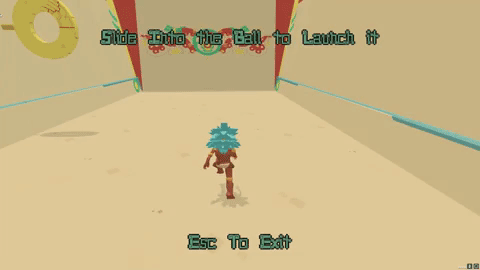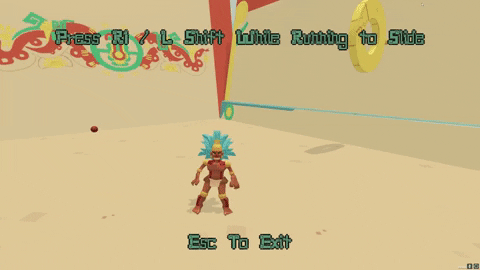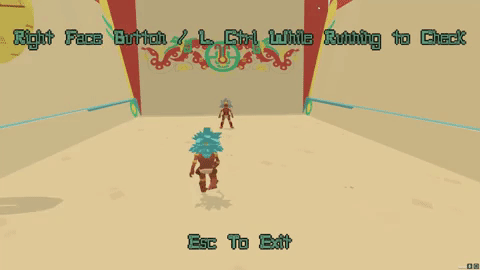My Role: Designing movement mechanics, ability systems, game rules, writing design documentation for engineering, writing metrics gathering scripts, iterating based on playtest feedback.
Tech Used: C# and Unity with Universal Render Pipeline
Made by team of 20 for USC Advanced Games Projects.
Project Description: Pelota is a fast-paced 2v2 online multiplayer sports game inspired by the mesoamerican ball game.
Playable Link: Pelota (Itch)
Design Features:
Third-Person Dynamic Camera:
We began with a top-down camera model (angled) as it allowed for total field vision by each player. As we developed our networking model alongside design iterations, this was replaced by a third-person camera that allows for both player control and a hoop lock-on mode for ease of offensive play.
Ability System:
In a fast-paced competitive game, we wanted to keep the abilities relatively few in number while allowing for emergent strategic and mechanical gameplay. To this end players can Slide, Jump and Check.
While ability use varies by player and team, playtests and metrics data showed sliding and jumping used for both defensive interrupts and offensive shots, while checking was utilized to isolate defenders and block opposing rallies.
This was a highly iterative process with multiple playtests run throughout. As the primary systems designer on the project, my role also entailed analyzing downstream effects of any changes we made.

Slide

Jump

Check
Pop-Up UI Tooltip:
During testing, many players had no prior experience with fast-paced competitive action games. To provide an avenue for these players to learn quickly while getting into the game, I was in charge of creating, editing and implementing a controls tooltip tied to the Start button on controller, which would show controls without interfering with gameplay.
The Challenge of COVID:
As USC operated remotely from March 2020-May 2021 due to COVID, this project was entirely based in distributed development. I found focusing on shorter, more precise documentation for both engineering and art teams was a necessary component of communication throughout the project. This required becoming well-versed in Perforce very quickly as we all operated on our own machines from home. While I wish we'd been able to meet in person during development, this project happening at all is a testament to how much every single member of our 20-person team wanted to make this game.